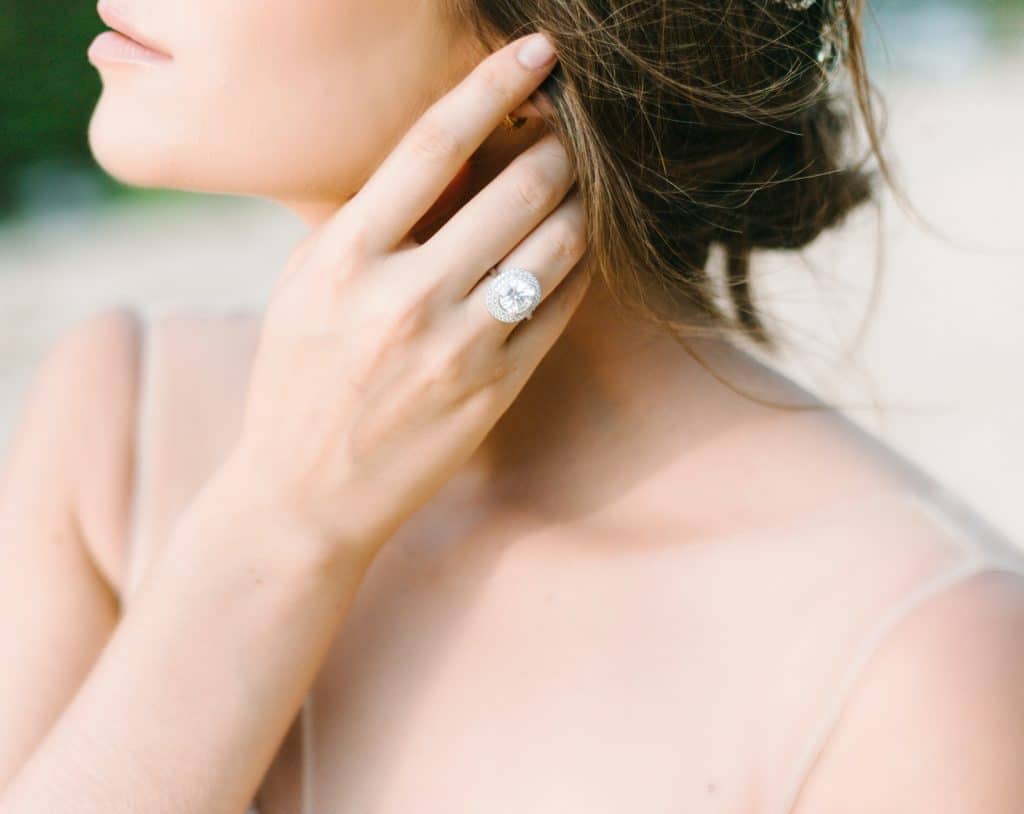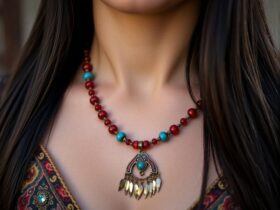When a person goes to buy jewelry, they often head to diamond pieces first. There’s an old saying about diamonds being a girl’s best friend. However, there are times when a person wants something other than a diamond. There are countless reasons why they may search for an alternative, and they are fortunate enough to have an option in the form of cubic zirconia pieces.
What is Cubic Zirconia?
When someone goes to buy jewelry with a gemstone, cubic zirconia (CZ) isn’t usually the first stone that comes to mind. Unlike diamonds which form deep within the earth, cubic zirconia stones come from a lab. This simulated, man-made stone first appeared in the late 1970s, and people immediately noticed its strong resemblance to diamonds. In actuality, high-quality CZ stones often cannot be distinguished from real stones and experienced gemologists might struggle to tell which is the diamond and which is the CZ.
People quickly took notice of this new stone and were amazed at how closely it resembled diamonds. Sales soared, and prices skyrocketed because of the overwhelming demand. However, over time, the prices came down, and people can now get a breathtaking piece of cubic zirconia jewelry at an affordable price. Nevertheless, the history behind this stone is one every person should know, as cubic zirconia wasn’t made as a substitute for diamonds originally. However, Lab created diamond products are now in trend because of their quality that comes at an affordable price. Nowadays, even celebrities started wearing lab created diamond wedding band on special wedding occasions.

Where Does Cubic Zirconia Come from?
M.V. Stackelberg and K. Chudoba, world-renowned German mineralogists, found the first natural form of this stone in 1937. When they first discovered these microscopic grains, they found them extremely interesting yet never stopped to document the find. It wasn’t until some time passed that scientists used x-ray diffraction to determine cubic zirconia is the natural equivalent to a synthetic diamond.
Decades passed before anyone thought to use a simulated cubic zirconia stone for jewelry. When the first simulated cubic zirconia was made in Russia, scientists planned to use it in laser technology. They were struggling with a shortage of natural rubies, which were used to generate laser beams.
Russian scientists began experimenting with different substances to find an alternative to the natural rubies. This led to the creation of the cubic zirconia. Surprisingly, this stone has little in common with rubies geologically. However, it did have the optical qualities needed for Russian laser technology at that time.
Soon after the Russians discovered cubic zirconia served as a good substitute for rubies in laser technology, somebody suggested the stones be used in jewelry. That’s when people realized the similarity of this stone to diamonds. Although it would have been apparent to anyone who looked before them, they were so focused on its use in laser technology they overlooked an obvious application for the stones.
What is Cubic Zirconia Made of?
Zirconium is an element found in the earth’s crust. This metal crystallizes in an S-shape star similar to that seen in the zircon gemstone. However, zircon is a zirconium silicate, while cubic zirconia comes as zirconium oxide. Why does one need to know this?
When the oxygen and silicon are switched, the zirconium metal can be crystallized. A person adds a bit of calcium or yttrium, another element, to the zirconium metal, which forces the metal to stabilize into crystals. This allows the cubic zirconia to take on a form that mimics that of natural diamonds. In fact, this process is so successful, people often cannot distinguish between the two.
Nevertheless, the process requires high heat. Scientists found they were lacking a container that would withstand the temperatures needed to complete the process. Even platinum wasn’t enough to carry out this task. That’s why manufacturers didn’t mass produce these stones until the late 1970s. That’s when technology advanced to the point these high temperatures could be easily achieved. Surprisingly, the microwave is what made this possible.

Skull melt is the process used to create cubic zirconia. Manufacturers fill a container with zirconium metal, powdered zirconia, and a stabilizer before heating this mixture using a radio frequency field like that seen in microwave ovens. The zirconium oxide powder serves as its own insulation and container, which allows the core temperature to reach the extreme heights needed to create the stone.
When this temperature is reached, the metal and oxygen react, causing the metal to melt. During this process, a skin forms that remains solid thanks to liquid-cooled copper tubes placed around the skull. The contents remain molten for several hours for uniformity purposes before the powder is reduced. Those handling the process then slowly lower the skull out of the coil.
Crystal growth occurs at the skull’s bottom and columnar crystals form from this area. The process continues until the whole melt has solidified. Each crystal column is typically two inches in diameter, and light tapping will separate each column. As scientists have learned more about this process, they are able to provide cubic zirconia in many forms to meet the needs of all.
Cubic Zirconia Today
Cubic Zirconia has come a long way since scientists first created it in a lab. Now the stones come in a range of colors, including pink champagne, colorless, and blue. Jewelers cut them into a variety of shapes, such as emerald, princess, and oval. Consumers love them because they cost approximately ten percent of natural diamonds yet look exactly the same. A quality cubic zirconia cannot be distinguished from a real diamond, even by many jewelers.
The stones come with minimal flaws and fall under the Grade F category when one looks at the diamond clarity chart. Cubic zirconia stones are practically perfect, unlike diamonds which have external blemishes or internal inclusions. Some diamonds actually have both in the same stone.
Where the two stones differ is in the weight. Cubic zirconia weighs significantly more than a natural diamond of the same size. In addition, scientists and jewelers measure its diameter in millimeters. A cubic zirconia stone and diamond of the same size won’t have the same weight in carats. The CZ stone actually weighs 1.7 times more, so a one-carat diamond weighs one carat while a 6.5-millimeter CZ stone is the same size but comes in at 1.75 carats.
The next time you go to buy jewelry, ask to see pieces with cubic zirconia. Compare them to items with natural diamonds. If the jeweler did not tell you which was which, you probably couldn’t tell the difference. As a result, you can upgrade your jewelry collection without spending a fortune to do so. Only you will know how much you paid for the items you are wearing and that they aren’t the real thing.













Leave a Reply